Abstract
The development of a pure Bacteroides fragilis infection in mice is described. The infection produces large subcutaneous abscesses at the site of injection which can be observed grossly within 7 days after injection. The infection was initiated by infection of pure cultures grown in semisolid agar medium. Similar infections were also produced with pure cultures of B. distasonis, B. ovatus, B. thetaiotaomicron, and B. vulgatus. However, a distinct deoxyribonucleic acid homology group, formerly classified as B. thetaiotaomicron, did not produce abscesses in any of the mice tested.
Full text
PDF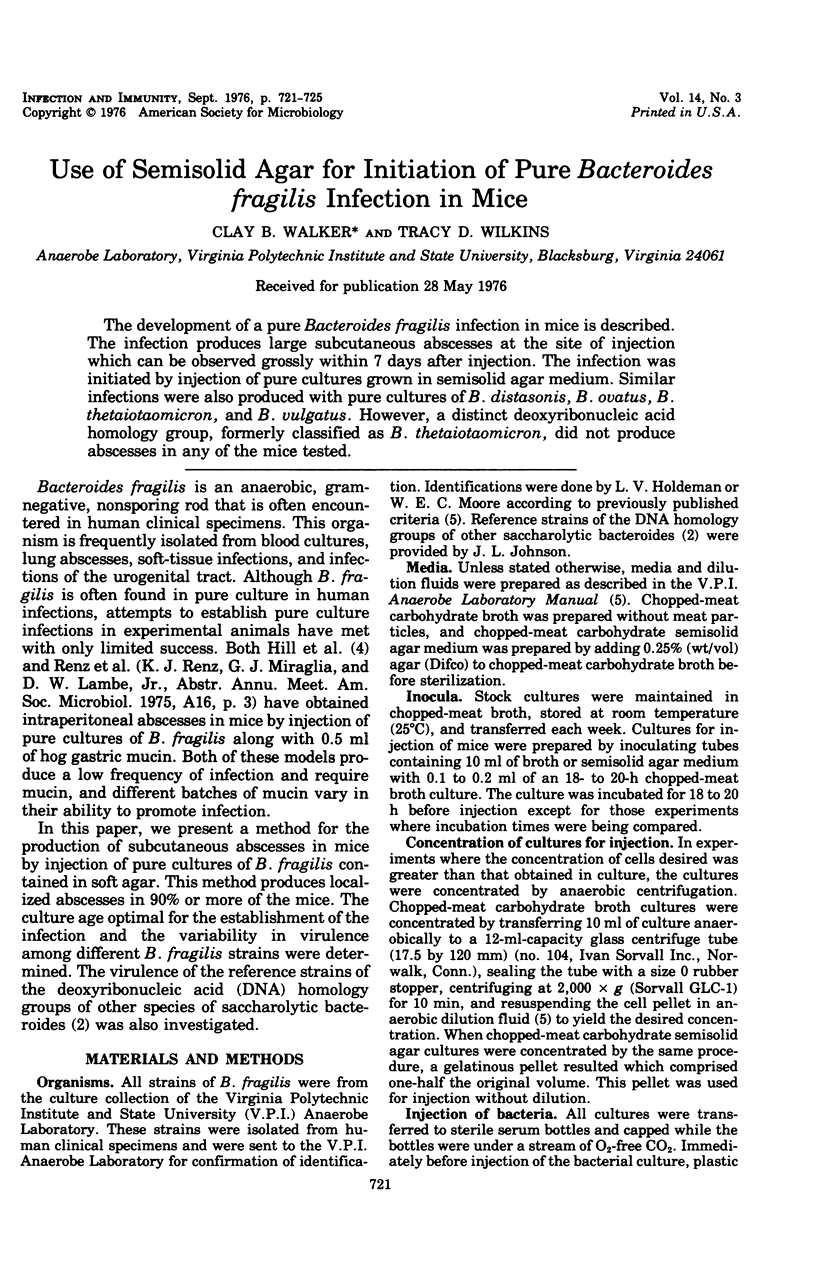
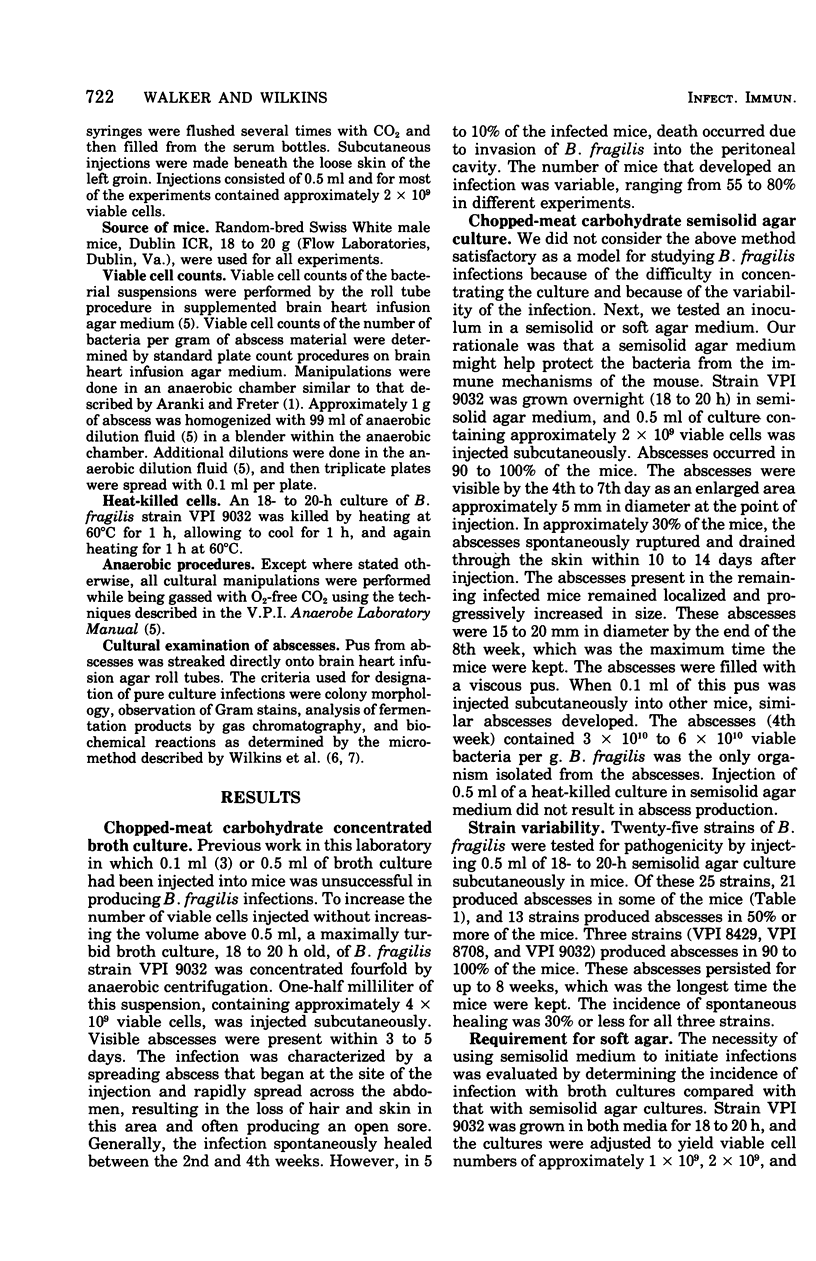
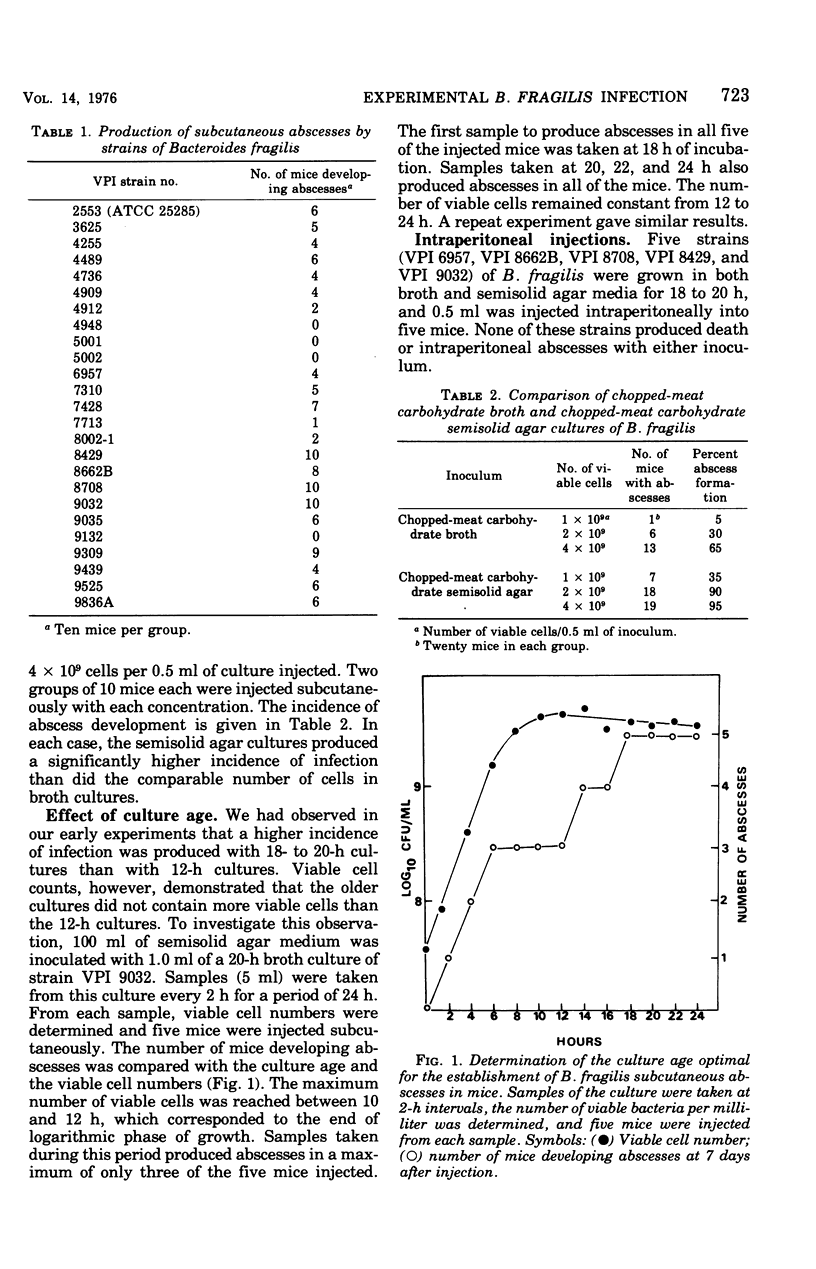
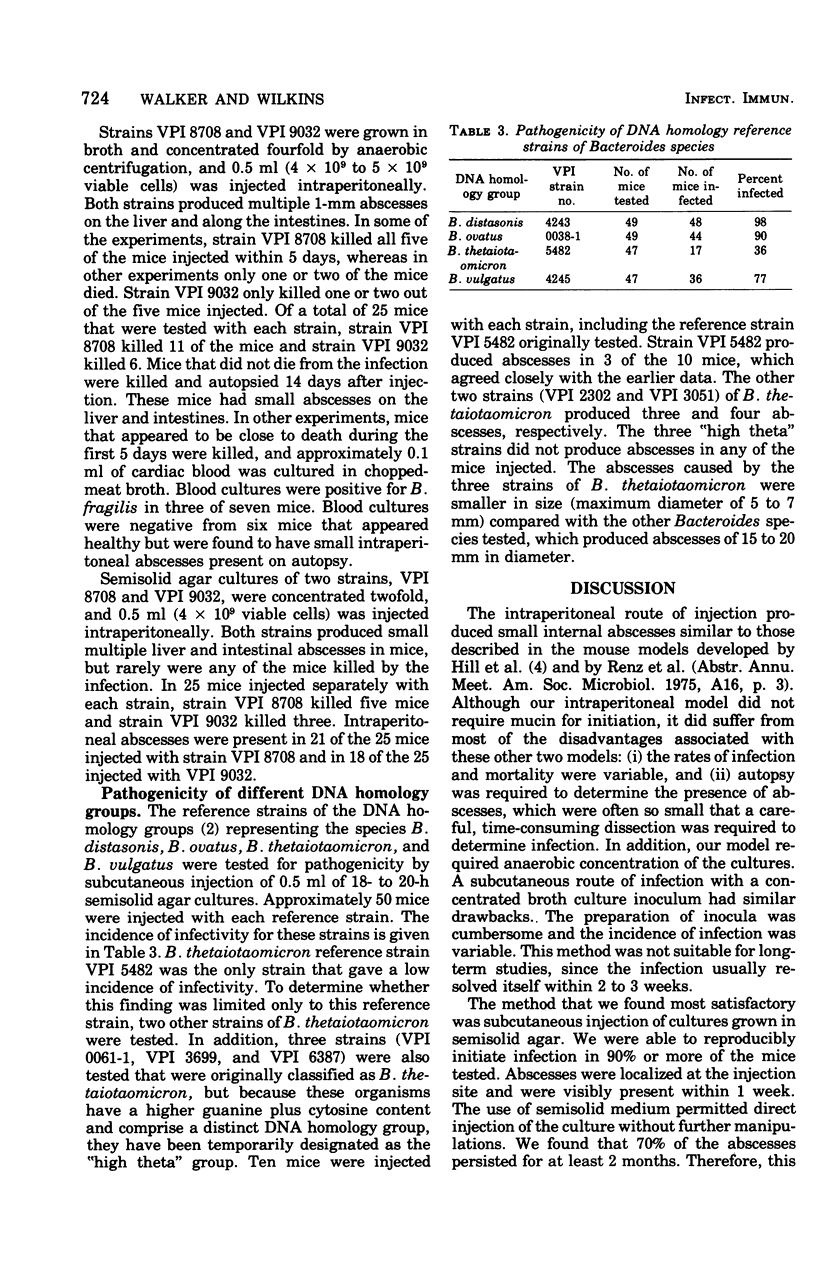
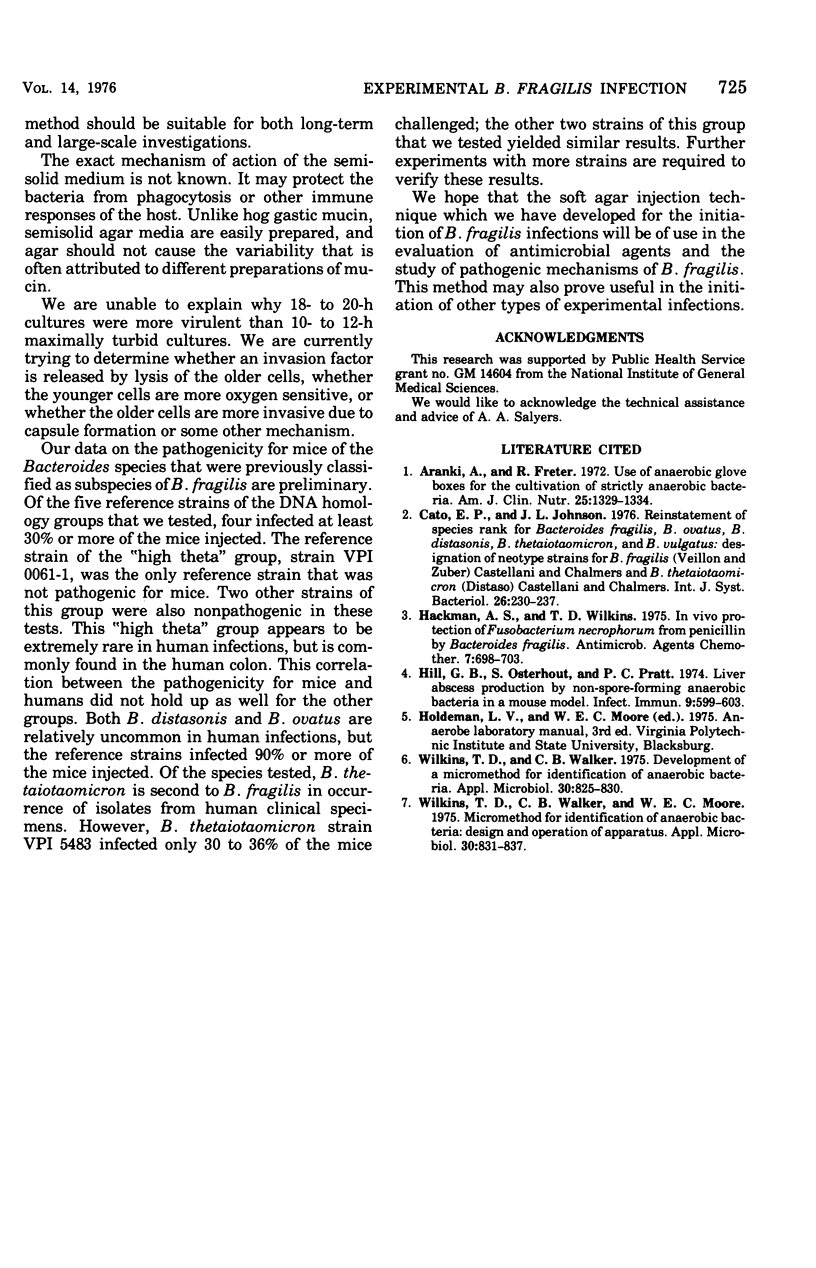
Selected References
These references are in PubMed. This may not be the complete list of references from this article.
- Aranki A., Freter R. Use of anaerobic glove boxes for the cultivation of strictly anaerobic bacteria. Am J Clin Nutr. 1972 Dec;25(12):1329–1334. doi: 10.1093/ajcn/25.12.1329. [DOI] [PubMed] [Google Scholar]
- Hackman A. S., Wilkins T. D. In vivo protection of Fusobacterium necrophorum from penicillin by Bacteroides fragilis. Antimicrob Agents Chemother. 1975 May;7(5):698–703. doi: 10.1128/aac.7.5.698. [DOI] [PMC free article] [PubMed] [Google Scholar]
- Hill G. B., Osterhout S., Pratt P. C. Liver abscess production by non-spore-forming anaerobic bacteria in a mouse model. Infect Immun. 1974 Mar;9(3):599–603. doi: 10.1128/iai.9.3.599-603.1974. [DOI] [PMC free article] [PubMed] [Google Scholar]
- Wilkins T. D., Walker C. B. Development of a micromethod for identification of anaerobic bacteria. Appl Microbiol. 1975 Nov;30(5):825–830. doi: 10.1128/am.30.5.825-830.1975. [DOI] [PMC free article] [PubMed] [Google Scholar]
- Wilkins T. D., Walker C. B., Moore W. E. Micromethod for identification of anaerobic bacteria: design and operation of apparatus. Appl Microbiol. 1975 Nov;30(5):831–837. doi: 10.1128/am.30.5.831-837.1975. [DOI] [PMC free article] [PubMed] [Google Scholar]


